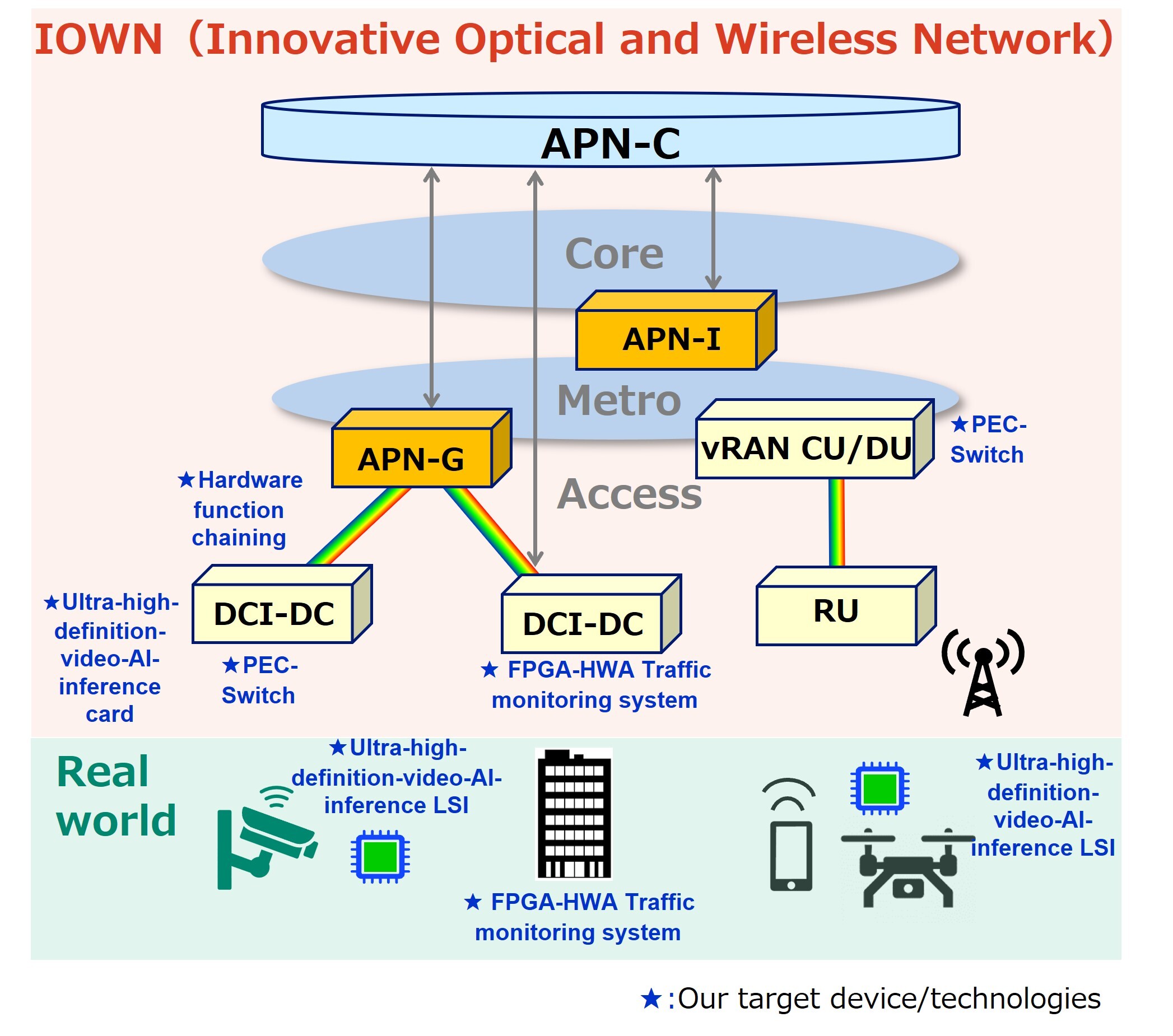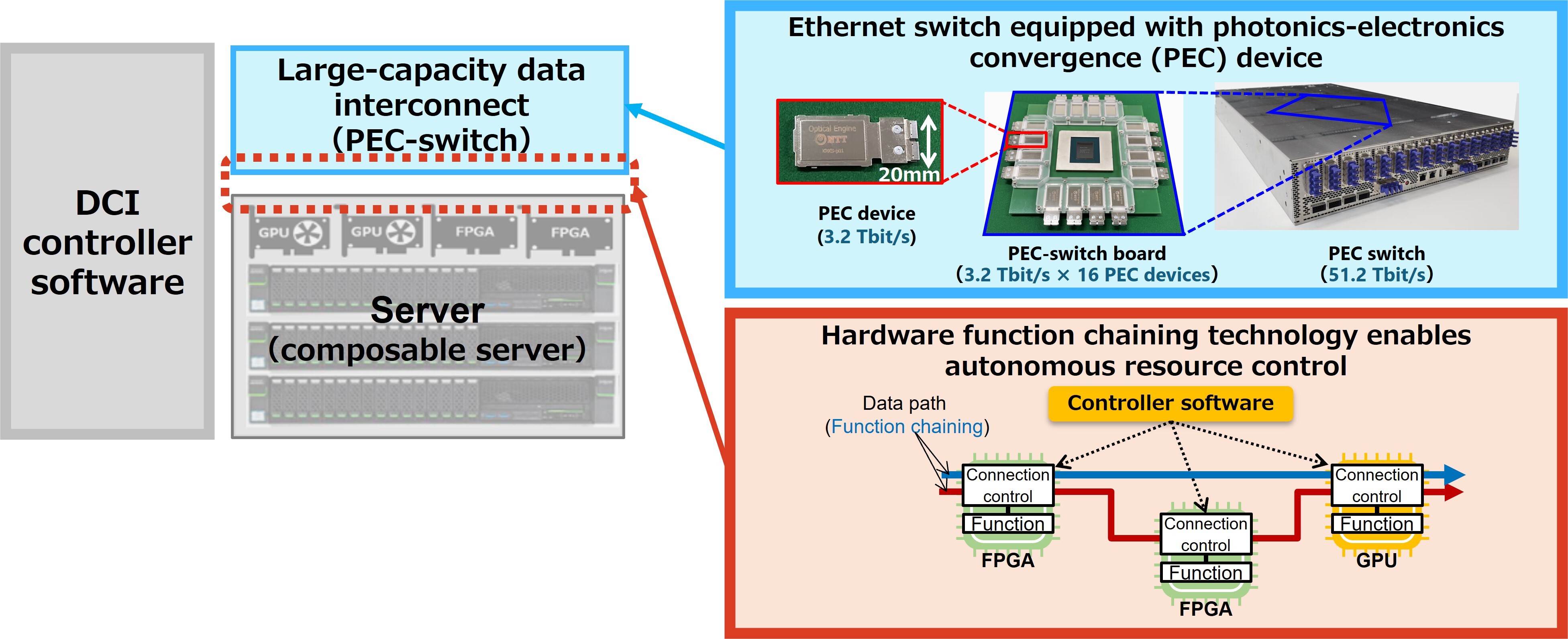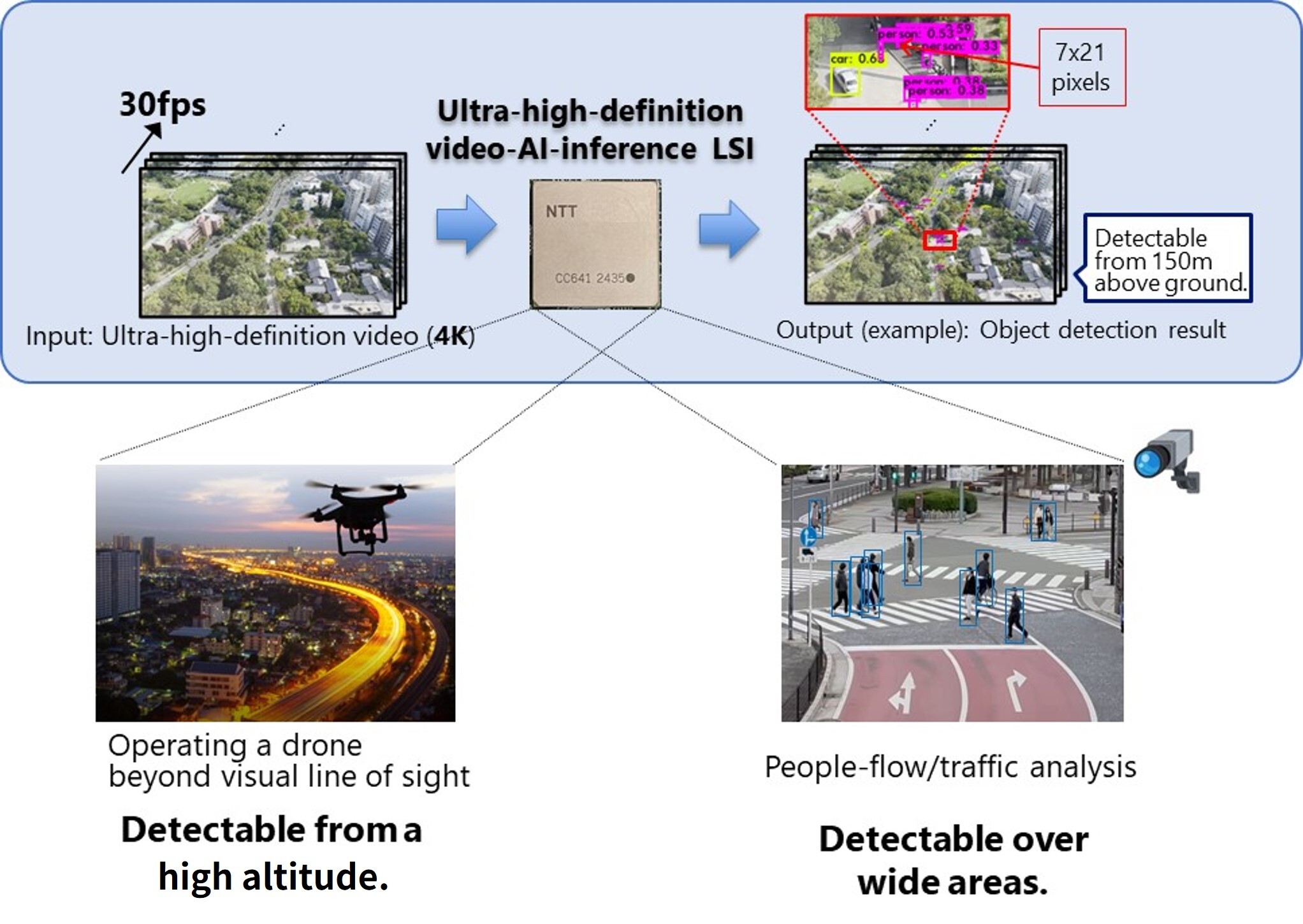Computing Device Project
The Computing Device Project centers on researching and developing computing architectures and device technologies that enable large-scale data processing with minimal environmental impact. Our work aims to meet the growing demand for data, which continues to increase rapidly due to the widespread use of video streaming services and smartphones and the expanding role of AI in daily life. Our focus includes interconnects for data center, ultra-high-definition-video AI-inference LSIs, and FPGA-HWA traffic monitoring systems. Through development of these technologies, we aim to help realize the next generation of network services and improve the energy efficiency of future data centers.
① Interconnect technology for data-centric infrastructure (DCI)
The goal of future communications research is to build networks that connect almost everything. To achieve it, a communication infrastructure is required that coordinates and controls multiple computing resources in remote locations so that users can receive services as if they were provided by high-performance computers located nearby. In particular, we are researching and developing high-capacity, low-power-consumption Ethernet switches equipped with photonics-electronics convergence (PEC) devices developed at NTT and hardware function chaining technology that autonomously coordinates and controls hardware resources such as memory, GPUs, and field programmable gate arrays (FPGAs). These technologies will be used in interconnects for data-centric infrastructure (DCI) that provides highly efficient and low-power-consumption digital computations.
② Ultra-high-definition-video AI-inference LSI
The use of video AI has become an increasingly important way to improve the efficiency of operations and production . In particular, there is an increasing need for video AI in edge and terminal applications. On the other hand, conventional technologies face resolution and throughput challenges. To meet these challenges, NTT has developed an LSI that extends the AI inference resolution to 4K, while operating in real-time and at low power. For example, when this LSI is installed on a drone, it becomes possible with AI inference to check, even from an altitude of 150 m, the presence of passersby and objects such as cars under the flight path, which is necessary for safe navigation of drones outside the visual line of sight. In addition, this LSI has a wide detection area that makes it useful for people-flow/traffic analysis services in public spaces.
③ FPGA-HWA traffic monitoring system
Virtualization technology that allows for the flexible configuration of virtual machines and network resources via software has become widespread. This technology enables a variety of network services to be provided not only through on-premises systems, but also in integrated 'cloud' and 'on-premises' environments. The increasingly complex network configurations of such environments have made network monitoring an essential aspect of implementing security measures and identifying the root causes of failures. We are currently developing an 'FPGA-HWA Traffic Monitoring System' consisting of probes that monitor traffic conditions from various networks in real-time and a controller that aggregates, centrally manages, and visualizes the results. Using FPGAs enables failure detection in real-time, even in ultra-high-speed networks supporting bitrates from 10 to 100 Gbps. The aim of this system is to minimize the impact on service users in the event of a failure.



